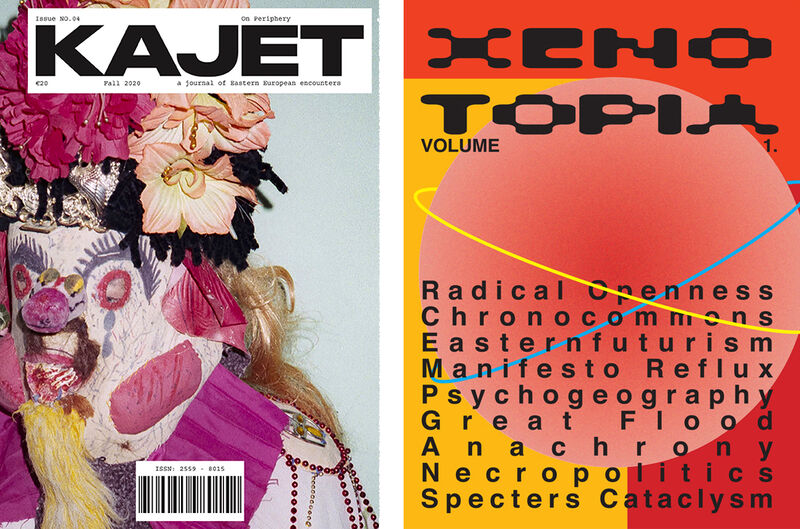Test für eine Kurtbeschreibung

ist das einne Bildunterschrift?
Salon für Kunstbuch, Luftbadgasse 16, 1060 Wien
Salon für Kunstbuch & adO/Aptive has invited the editors of KAJET Journal and XENOTOPIA magazine to present their newest editions. This event is part of the conference rA/Upture: xenofuturities_specters_anachrony, streamed online on October 3rd and 4th 2020. (http://adoaptive.pet/projects/raupture-conference) adO/Aptive http://adoaptive.pet
SALON FÜR KUNSTBUCH
Archival Practise Unlimited
open to produce - to edit - to exhibit
Initiated by Bernhard Cella
www.salon-fuer-kunstbuch.at
XENOTOPIA is the new magazine project of the Berlin and Budapest based publishing project and art collective 'Technologie und das Unheimliche' . The first edition of XENOTOPIA has been commissioned by the OFF-Biennale Budapest 2020. Its focus is on the Hungarofuturist movement which is a mythical fiction and aesthetic strategy that proposes to transform cultural and historical imagination in both a spatial and temporal sense. The issue can be interpreted as an attempt to situate the Hungarofuturist project within the array of other emergent ethnofuturist tendencies. Accordingly, the pages of this XENOTOPIA issue function both as a sensual, as well as a discursive space for (para)academic analysis and artistic interpretations of Hungarofuturism in various ethnofuturist contexts.
KAJET Journal emanated out of an urgent need to provide a platform for Eastern European narratives. Aiming to become a timeless archival document, it gets its name from the Easternised version of the French cahier, meaning notebook. It embodies the ethos of KAJET: a textual and visual collection of thoughts, an assemblage of neglected narratives, a self-expanding string of reflections and perspectives, a perpetual work in progress of a history that keeps re-writing itself; essentially, a journal of Eastern European encounters. The fourth issue of KAJET explores the possibility of a revised vision for the future of Europe, not in a totalizing manner, but in a critical, reflective way. KAJET alerts the center of the possibility that there is not one world, not one history, not one future without alternatives, but rather many disparate worlds that are being lived at different speeds, according to different rhythms, producing contradictory histories and futures.
